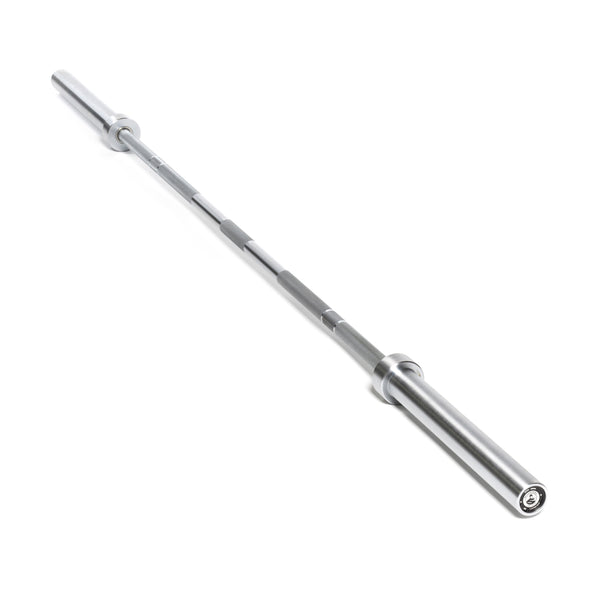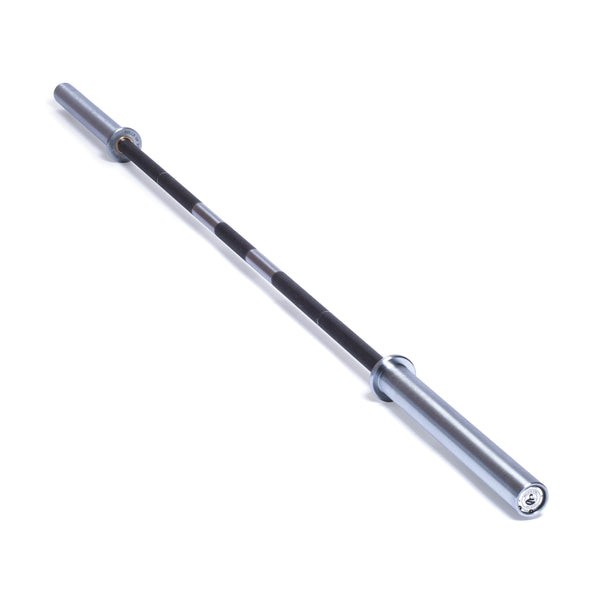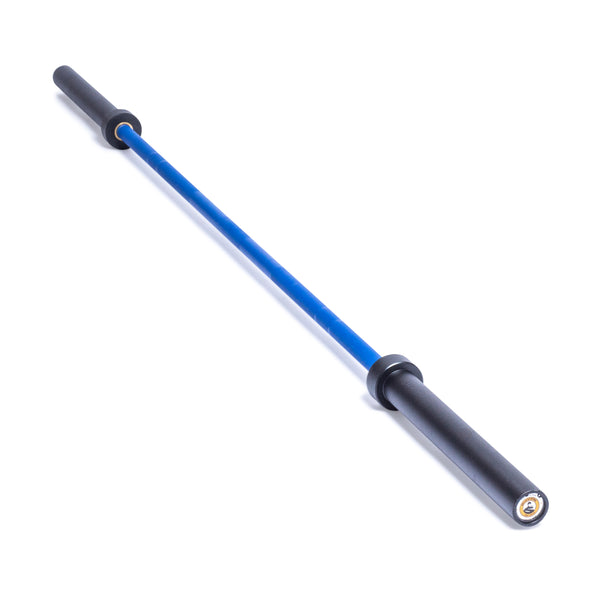Deadlifts are one of the best exercises to show off your total body strength. That said, there are a lot of different types of barbells out there and it can be downright confusing to understand how to deadlift properly with them. In this article, you’ll learn how a power bar is different, what exercises to use it for and how to deadlift with it.
Heads up — we recently loaded up over about 500 pounds on our Barenaked Powerlifting Bar to test it out. See how the bar held up by checking out the video below! But first, what the heck is a power bar? A power bar (short for “powerlifting barbell”) is a special type of bar that’s stiffer than a regular barbell. Typically, power bars all follow a similar design. For example, they tend to weigh 20kg/44lbs, measure 7 feet long and have a 29mm shaft diameter with coarse knurling.
They’re also strong and stiff to be able to handle seriously heavy weights — we’re talking well over 1,000 pounds here. At reputable commercial gyms, power bars tend to be the most popular barbell choice because of their strength and durability. So, chances are that the random bar you grab will count as one.
Lastly, power bars also tend to meet IPF specs. This means that they match the exact dimensions that the International Powerlifting Federation requires for a barbell to be used in their competitions. A power bar is designed for doing the powerlifts: the back squat, the bench press, and the deadlift.
In powerlifting, the goal is to lift the most weight possible in those three exercises. The emphasis on lifting heavy weights and the fact that these exercises — when performed maximally by the lifter — will be at slow speeds where efficient technique is ideal. To help accomplish this, a power bar will need to be stiff and have a smooth sleeve rotation. Think about it: if you’re going for a new back squat personal record, the last thing you want is to walk out the bar and have it whipping around on your back.
This is why a barbell’s stiffness is so important. A power bar won’t flex and oscillate because if it did, it could cause the lifter to misgroove their rep or (at worst) get injured. Similarly, smooth rotating sleeves are critical for a power bar. This is accomplished best by installing bushings in the sleeve, which allows it to rotate smoothly during the lift. It should be mentioned though, that there’s also such a thing as too smooth.
Using an Olympic weightlifting bar for a back squat personal record would show you this issue first-hand, where the sleeves spin so easily that it can throw off your technique. With a great quality power bar though, you can use it for all the powerlifts and their exercise variations. This avoids you having to switch your barbell every time you change exercises during a workout, saving you money (since one bar is all you need) and time!
Unsure about how your straight bar deadlift should be modified when you’re deadlifting with a stiff power bar? Don’t worry, nothing really needs to change. In fact, deadlifting with a stiff power bar will just feel way better when compared to a regular old barbell. Let’s get down to it, here’s how to deadlift with a stiff power bar:
- Set the bar under your midfoot
- Lean forward and grab the bar
- Bend your knees until your shins touch the bar
- Stick your chest outwards
- Drag the bar up your body
- Set the bar down on the floor
-
Set the bar under your midfoot
-
Lean forward and grab the bar
-
Bend your knees until your shins touch the bar
-
Stick your chest out
-
Drag the bar up your body
-
Set the bar down on the floor
Then, slide the bar down your body to the floor to complete the rep. Deadlifting with a stiff power bar is just like deadlifting with a multi-purpose barbell, with a slight twist.
With a power bar, your straight bar deadlift will feel quite a bit better since the barbell is specifically designed to handle heavy weights. Remember — power bars are stiffer, thicker and more coarsely knurled and this makes them perfect for big deadlifts!
Unless you’re in the 1% freak population and can easily deadlift 800lbs or more, a stiff powerbar should be able to handle everything that you can throw at it.




